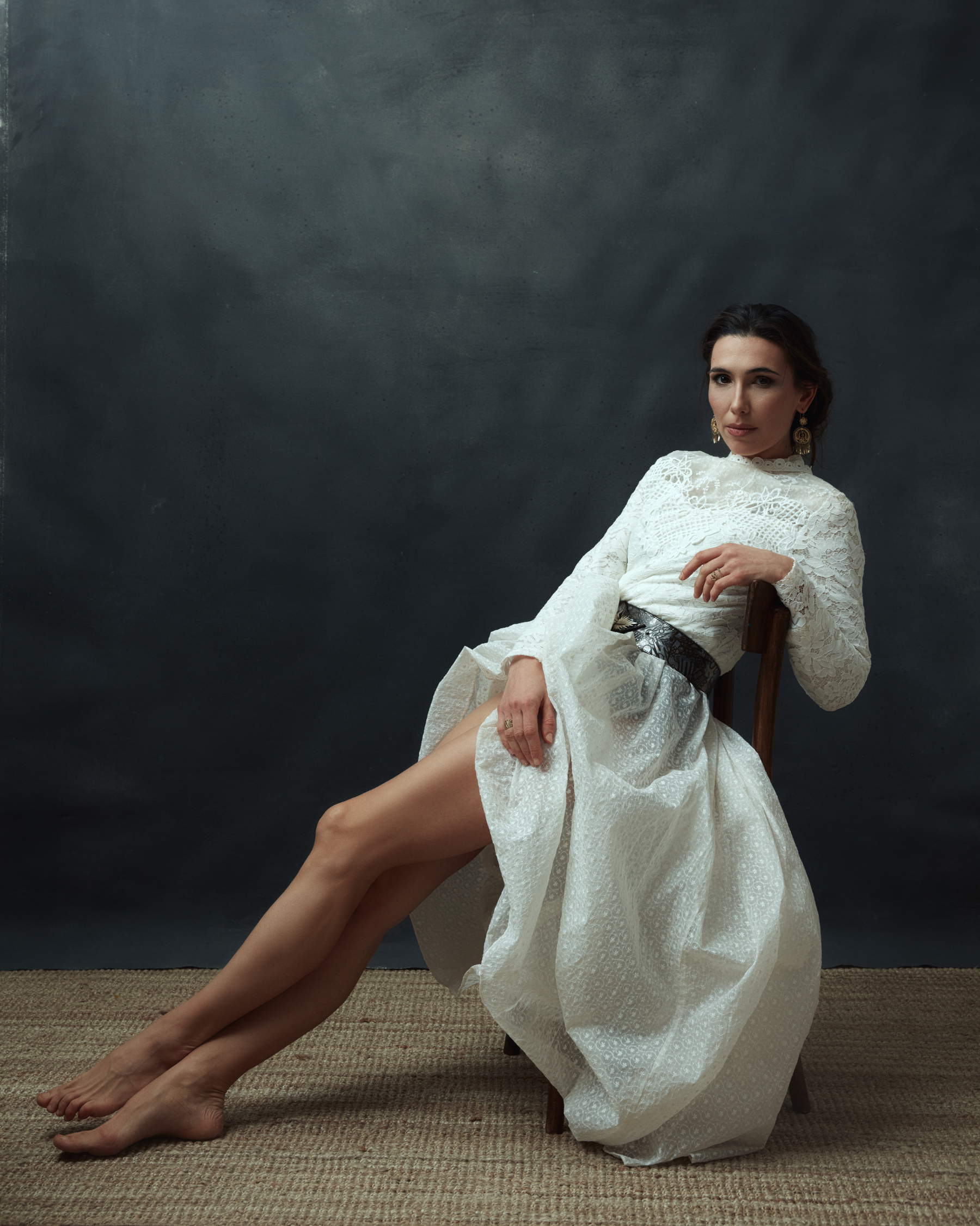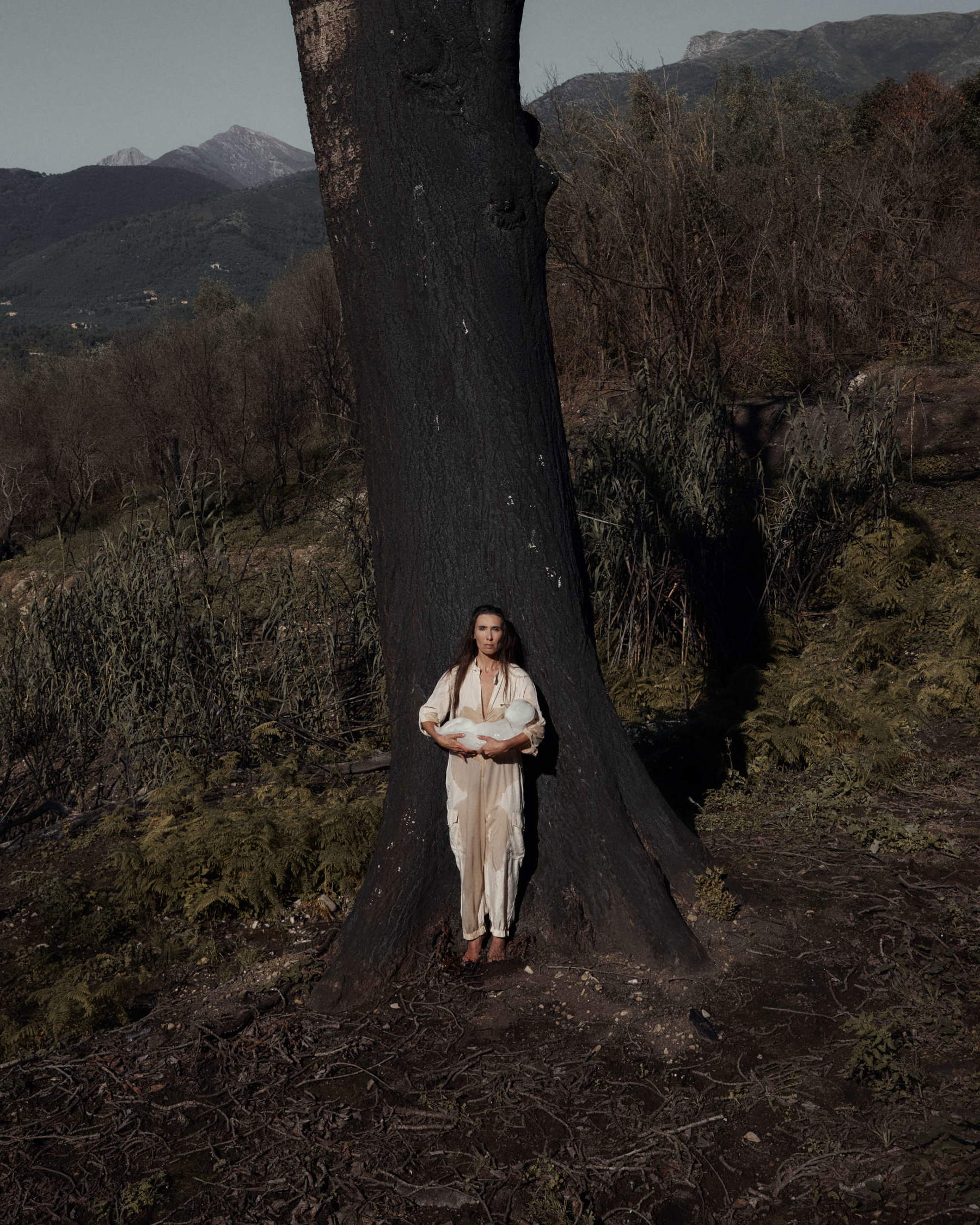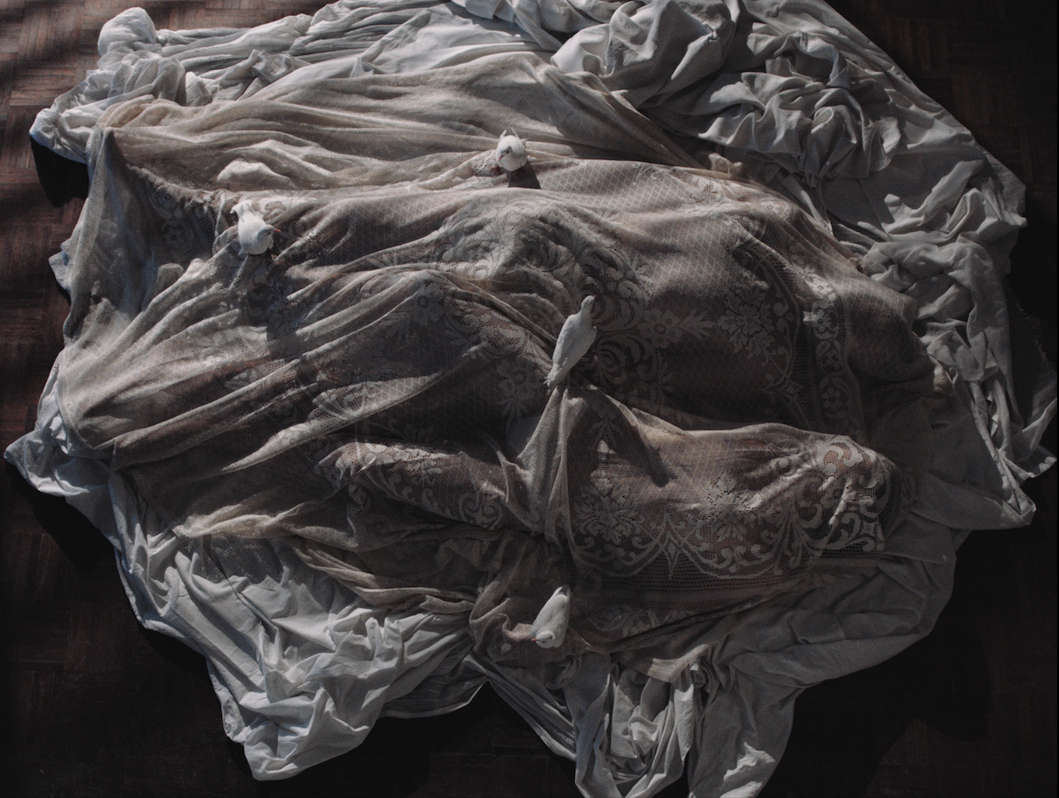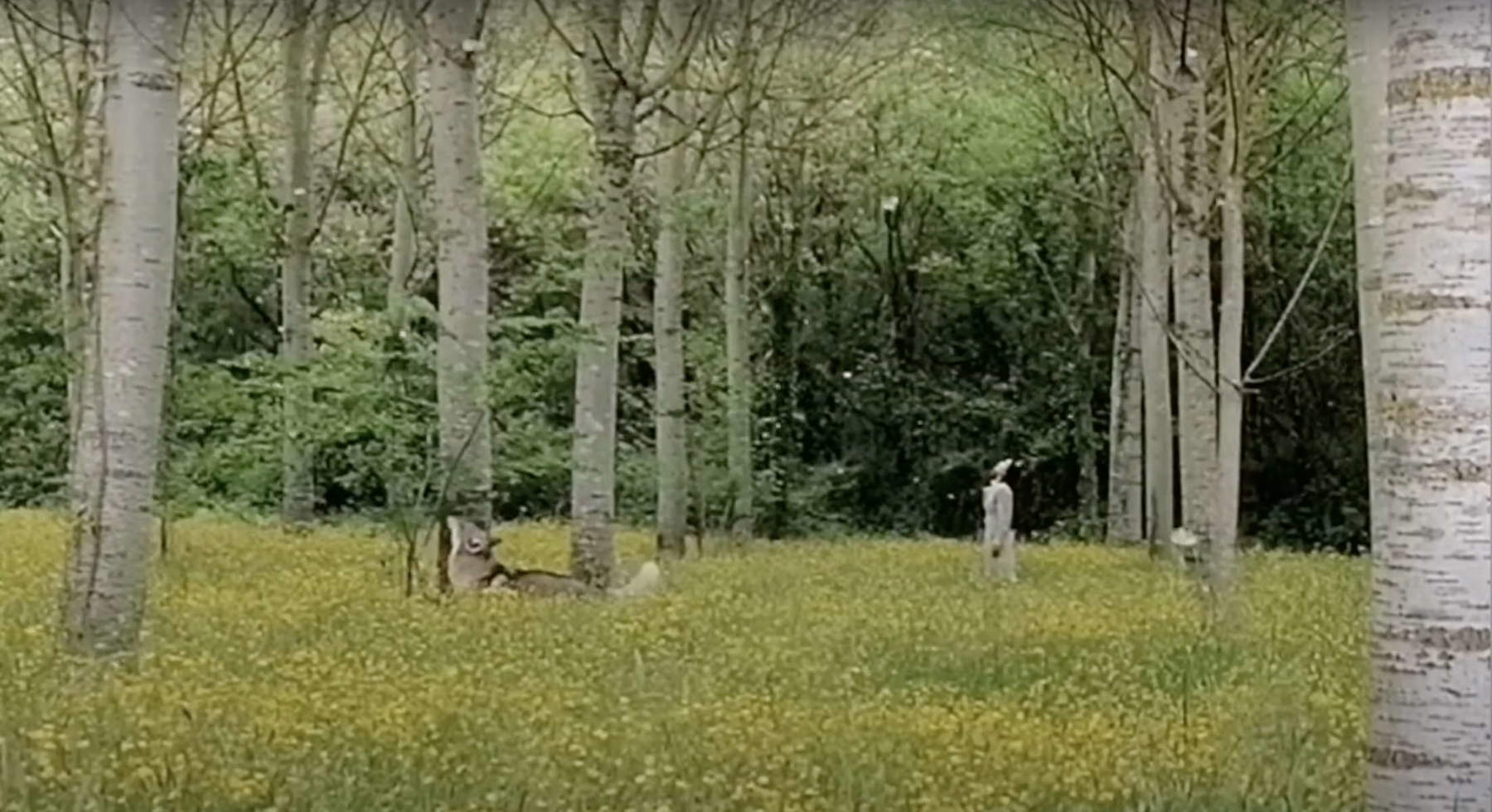What does it mean to be a performer? We talk about it with Giulia Perelli (Lucca, 1985), actress, author, performer and visual artist. Trained between Rome and Belgium, she works in Europe, Asia and the Americas, alternating between personal projects and collaborations with international directors and artists. She is the protagonist of award-winning theater and film works, creates installations, video art and performances hosted in festivals, galleries and theaters. In 2011 he joined Jan Fabre’s company and took part in two historic performances on world tour. Since then he has been exploring an artistic quest centered on body, vision and symbol. He stars in Romeo Castellucci’s Democracy in America (2016-2019), plays male and female roles in works for Sky Arte, Gucci Garden, William Kentridge, Carlos Saura. As an artist, she has created works such as Pietas and Living Here, between spoken word and dance. In 2020 he made art videos and two films on texts by Fabre. He is a finalist in the Biennale College 2021 with MezzoMiracolo. Recent projects include: M.E., on Maria Eletta Martini, Non parlate di me, on Marilyn Monroe, and a work on Maria Callas, produced by Teatro del Giglio. He lives in a forest, where art and nature continue to bond. In this interview by Noemi Capoccia we explore Giulia Perelli’s artistic journey and try to understand how mediums such as performance and video art can be useful to convey an urgency, to explore the world.

Her artistic journey moves between theater, video art, installation and performance. How much did growing up in Tuscany in nature and your training between Rome and Belgium influence you?
They are three places-homes for me, which formed my imagination and were very different growing grounds. Tuscany is the home of nature, of the far-sighted gaze and silence, beauty, harmony, perspective: having the Apuan Alps in front of you makes you feel small, and it definitely affects the perception of the importance of human beings in space. That is, little. There is something bigger than us: the landscape, the climate and the seasons that also mark an inner cycle of gathering, sowing, rebirth, expansion. In nature it happens inevitably for me. Rome is my home of words. The place where I began to express myself most freely. I moved there as soon as I came of age, alone, with no reference points except a dream. It is the place where I learned the craft of acting and authoring my own shows. It gave me exchanges full of inner turmoil, affinity with sensitive people, with common languages and themes. Fundamental accomplices. In Rome, in the artistic world in general, I found a lot of attention to authorship. I also start from a very personal feeling to create something. It is not the only way, it is not obvious, but it is central to my work. Then, once I learned to express myself with words (I think of the show Fireflies, where the text was dominant) I went among the Flemish, where verbal language was not the most understandable means of communication. Not only because of the language, but because of the type of theater. There I developed a different listening and expression, which brought me down to a different sensibility. The body was the protagonist. Belgium, which for me is mainly the experience at the Troubleyn, Jan Fabre’s theater in Antwerp, gave me an expansion toward even greater freedom, inner, creative and in general of life, for several reasons: the first, is that I was driven to go beyond all limits on stage. I had to dare. I had and perhaps still have a tendency to limit myself, to restrain myself, for personal reasons, but also for a certain modesty and judgment that is all Italian; it will be that we have had sublime artists in the past, valued more than their contemporaries socially and economically, so we are much more intimidated and judicious. Instead Fabre is not modest and wants to work with performers who challenge him, who surpass him. He wanted me to be a goddess on stage, a “Warrior of Beauty,” otherwise I was out of the party. It requires a very strong energetic greatness, both physically and intellectually and emotionally. So I jumped as if from a very high cliff, with great permission to live completely. From Antwerp I went on long international tours, with an international company, with whom I shared a fertile, ruthless, very strong language, the language of Fabre’s world that all of us in the company co-create and nurture with our own personalities and different cultures and imaginaries. Belgium was my home of visual art, performance, contemporary theater, which was light years away from what I was seeing in Italy. This openness also gave me permission to range between different media. To be able to be both director and performer, both actress and visual artist. Eclecticism does not scare abroad, on the contrary. I simply function that way, traveling between different languages fuels a fire. I had always played with different mediums, but it remained in my private self. The international experience has given me permission to understand a possible value and then professionally share that underground work that I kept secret before, it was just part of the exploration. It is amazing that in the place where I did not speak my own language, I felt understood more. We need eyes that can recognize our inner world. We need someone to love it.
Nature plays a central role in your life and in your creative process. How, even today, does your connection to the environment manifest itself in your art?
It is the most pressing issue we have, that of nature. Without the earth and its elements, we simply cannot live. However, apart from some facile slogans, this is not at the center of the political debate. Humanity is condemning itself. It would be enough to plant fruit trees in every city so that we would not starve. Instead we prefer parking lots, as if it were normal. We should rethink, re-imagine an ideal world. In this also artists could help to re-vision, change perspective, have imagination. Beyond the ecological side then, there is the more spiritual one: I feel a kinship with nature, I belong to her. It is a very simple and everyday bond, but a deep one. Every element of nature, in ancient times, was recognized as a being with its own wisdom, or as a deity. Every plant was seen in its therapeutic abilities, extraordinary stories and myths were built on it that could tell their virtues. I am reminded of a sentence by Claude Lévi-Strauss: “No situation seems to me more tragic, more offensive to the heart and intelligence, than that of humanity coexisting with other living species with which it cannot communicate...At one time, nature itself had a meaning that each person, in his innermost self, perceived. Having lost it, man today destroys it, and condemns himself.” I think perceiving in one’s inner self is developing an inner compass that is necessary for a little bit of everything in life. Being in touch with one’s own wild knowledge.
You have collaborated with international artists such as Jan Fabre and Romeo Castellucci. How have these experiences influenced your artistic research? What lessons have you been able to learn from these encounters?
I discovered what it means, for me, to be a performer: the performer is an actress who lives a truth. She is an actress stripped of all masks, and thus exposed to the real. She is not only physically naked (not always, then): there is a deeper nakedness: that of being skinless, as vulnerable as possible. Of feeling, being energy and channel. This is my line in work and life. To overcome limitation is not to feed the ego, but to lose it, to put ourselves at the service of a creative force greater than our consciousness. I have experienced and learned so much from these great theater geniuses, who are primarily artists as well as directors. In working with them, because of the fatigue, commitment and intensity of the performances, I practiced a lot about presence, concentration and how to generate energy even in fatigue. Which are superpowers. The most important thing Jan Fabre gave me: the freedom to dare on the one hand, the power of pinpoint precision on the other. And Romeo Castellucci, I would almost say the opposite: the surgical responsibility of intellectual honesty, as the premise of acting, and the generative possibility of abandonment, to dream or nightmare, on stage. Castellucci reaches lofty heights, of celestial and abyssal depths, in synthesis. He is an immense artist, he is my favorite, he gave me the most beautiful and important role I could do. A very demanding role, emotionally, physically and mentally. But I did it by letting a power go through me. Romeo is a mature artist, deep and responsible for what he brings into the world. I am a great believer in the beauty of the artist’s maturity. I am interested in consciousness.


In your work, you often combine different artistic media such as music, dance, film, and poetry. How do you manage to integrate all languages in a linear way?
I follow my inner images. Fragments can come out seemingly distant but together they make a spark. I don’t worry too much about form, I trust the process, the form is a consequence of it. It does not matter what medium I use to express, but the content I express and the presence with which I do it and let myself do it. Art as I said before, is a means of transportation. To live, to convey the unspeakable, to name the unknown, to see, and perhaps to transform. It has to be an honest process of creating and letting go. I am very careful about what to bring into the world, we already have so much noise. I am for a mental ecology. And I think to be responsibly honest is to take a step toward an intention of truth. And truth heals. It always heals.
Your work also embraces issues related to politics and spirituality. What do you think is the easiest and most direct way to balance and tie these two aspects together? How have you managed to do this in your artistic storytelling?
In my opinion, a simple and direct way is to have a “sacred” event in mind, which can be the narrative of a myth, the story of a prophet, a hero or a biblical event or other religions, and to recognize it now, today, within us or in our society. Where is today the slaughter of the innocent? Where, today, is the exodus? Where is Cronos lusting for power and never wanting to die? Perceiving the mythical aspect of events is a direct way to understand religions. Otherwise there is a risk that they remain a belief, the opium of the people, an escape from reality. I combined politics and spirituality as a provocation in two manifestos, two Pietas: the first, dedicated to the migrants lost in the Mediterranean, a Pieta within the water. A denunciation against closed ports. The second Pietas is dedicated to the Earth of which the mother-mother becomes an allegory and the Christ is ice, in the process of melting. These are revisitations and actualizations of an icon that is an archetype in our culture, that stands in every alley of our country, and that we can recognize in our current reality. It is the icon of the ultimate pain, of the injustice of having a murdered child in your arms. In general I have a very developed sense of the sacred, it permeates my whole life.
During the period of the first lockdown you made a video art cycle called Inner Dimensions. What is it about?
It is 5 video art works, 5 performance acts. In the first lockdown I experienced a period of hermitage in nature. I practiced every day listening, contemplation, an inner opening to the Void, to receive a dream, an image, a knowledge, a revelation perhaps. The videos were born out of this inner process, aimed precisely at receiving. I have learned from the plant world and from the many animals I have met or who have come to visit me: relationship, listening, dissolution, the wisdom of mutation. Relationship, also inspired by Joseph Beuys, is a video about the contact between me and a wolf, and also between the pollen that rained down like snowflakes and the earth that received it. What is death? was born out of the pain of those who could not say goodbye to their loved ones because of the restrictions we had. It was a way to confront death, which in nature coexists with life, is obviously a transformation and nurturing. It is a video for those who are afraid of it, who would like to cheer this metamorphosis. And then there are Scars, Red Megaphones and Shoes. Making art is receiving, it is noticing life. All this is our wealth, it is what we have.


She said that her performance MezzoMiracolo, a finalist at the Venice Biennale 2021, is dedicated to “art that finds infinity in its processes.” The performance then explores themes such as the relationship between heaven/earth and creation/destruction. Why did you decide to develop the performance? And what was the starting point?
I needed to return to motivate, to give hope, to find a key to living, to activate one’s “good will.” It is a performance that addresses a question: how can we realize on the ground the ideas, which before are only “of the sky,” that is, ideals? How can we embody them, how can we build our home? How, in essence, can we live? This is a central theme for me. We live at a time in history when we are often overwhelmed by the impossibility of achievement: a home, jobs, relationships, a family. At least, in our country. It is a phenomenon of mass instability, which sometimes terrifies, especially my generation. It makes one feel helpless. It seems that degrees, master’s degrees, specializations, talent, experience--even just to the difficulty of finding a house because of overturism, or being able to pay for it. Yet it is a basic necessity. Never more than today is it a luxury. So I wanted to go back to possibility, to will, to our intentions, to focus our energy in what is feasible, to live. I think we went, artistically, to denouncing what was wrong, then to a phase of self-confession of our frailty, and that’s beautiful. Now we would so much need good examples. In the performance I dialogue with the music of Piero Perelli, my brother, drummer and sound explorer extraordinaire, with whom I regularly collaborate. And with Domenico Troiani, sculptor and artist, who sculpts a block of ice on stage. It is beautiful to see a craft accomplished with such skill. This is the message of MezzoMiracolo. To learn a craft is to perform a half miracle. As for the rest of the miracle, I don’t know what to do with it, but I trust it.
In this last period you have been working on the new project Attentions, also defined as an anthology. What does it consist of? What are “attentions” for you?
Attentions is a book of spoken word poetry and drawings. It is an anthology because it collects texts of different nature and different eras of my life. Making it something as coherent as possible was the hardest work, maybe I didn’t even succeed. Attentions are moments when we “turn our souls” toward something. They are moments of presence and caring, listening. It is a form of love.
How much is personal in the collection Attentions and how much instead represents a reflection on your artistic journey?
Attentions is a very intimate, flowery work, like all my work in the end. It was almost all written in ten years of touring. There is some reflection on my stage work, but it is not centered on that, apparently. It is, however, the consequence of that. Being on stage, creating, going through an unaccustomed, vulnerable and generative space like the theater has consequences. Exploring oneself, going to perceive one’s inner rooms, through one’s body and feeling, makes one know very deeply the human, animal and celestial soul ... life in short. And life becomes very dense and broad. Extremely rich. Interpreting is a very intense journey. It opens up universes. I wrote what I saw with more open eyes, as more exposed to the world. The world inside and the world outside of me. There are poems, aphorisms, verbal portraits, diary pages, ironic and dramatic pieces, naked prayers, my emotional heritage. Texts fit to be performed, with a recognizable and personal writing and is the consequence of that piece of life lived very intensely. It will be a cahier drawable by the reader, there are spaces for the reader’s and readers’ inspirations--and so I hope that each book will become unique.
Warning: the translation into English of the original Italian article was created using automatic tools. We undertake to review all articles, but we do not guarantee the total absence of inaccuracies in the translation due to the program. You can find the original by clicking on the ITA button. If you find any mistake,please contact us.